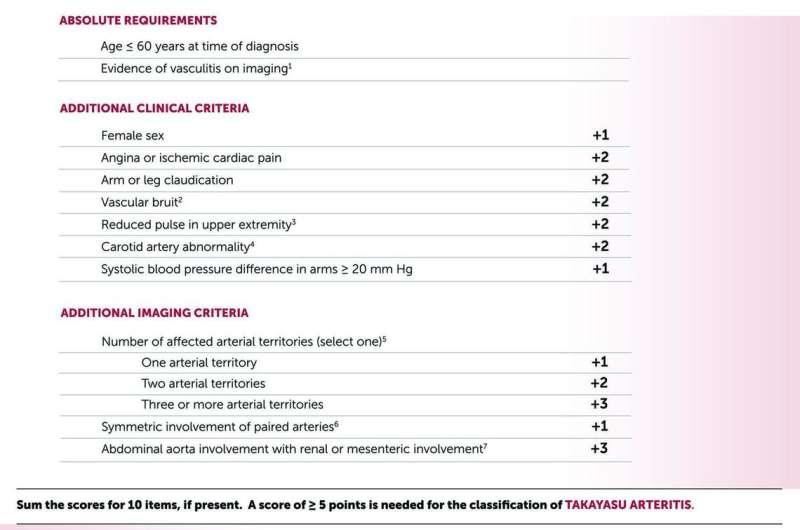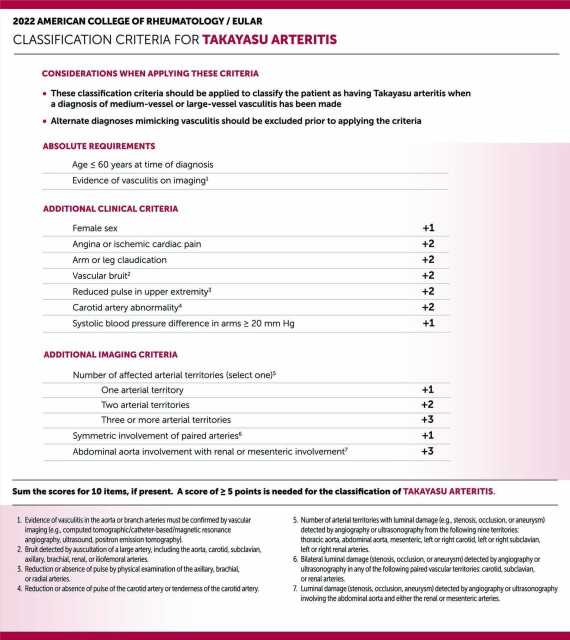
Takayasu arteritis is a type of large‐vessel vasculitis that affects the aorta—the main artery that carries blood away from the heart. This damage can cause complications such as stroke, heart attacks, and pain in the arms and legs from reduced blood flow
Classification criteria are not the same as diagnostic criteria. Diagnostic criteria are typically a set of symptoms and tests that can be used in everyday clinical practice to make a diagnosis of a particular disease. But classification criteria are used to make sure that a homogeneous or consistent population is selected for trials and research. This makes it possible to draw valid interpretations and conclusions from smaller samples of people than would be possible if the research population was very heterogeneous.
The previous classification criteria for Takayasu arteritis were published by the ACR over 30 years ago and were based on information from a very small number of people. In addition, the evidence was all from North America without any patient representation from Europe or Asia, where clinical patterns of disease may be different.
In addition, there have been huge advancements in imaging techniques in the intervening period. The updated classification criteria therefore use data from a wider geographical population, and are also intended to reflect modern clinical practice.
EULAR and ACR together gathered an international group of experts in vasculitis. Statisticians and data managers also took part to oversee the overall development of these updated classification criteria for primary vasculitis. The final stage of the process was to validate the new classification criteria for Takayasu arteritis by testing it in a series of cases and comparators. Importantly, this testing showed that the new EULAR/ACR criteria outperformed the original 1990 ACR criteria.
The resulting classification criteria should be used to confirm, for study purposes, that someone has Takayasu arteritis when a diagnosis of medium- or large-vessel vasculitis has already been made. There are two absolute requirements for classification: age of 60 years or less, and evidence of vasculitis on imaging.
The new document then lays out two sets of additional clinical and imaging criteria. Each of these ten items gives a score of 1–3. The additional clinical criteria include being female, having angina or chest pain, and having different blood pressures in each arm. The additional imaging criteria include the number of areas that are affected. If a person has a total score of five or more over the 10 items, then they can be classed as having Takayasu arteritis.
The new classification criteria reflect modern clinical practice, including current imaging techniques, and with specific age thresholds. They have been endorsed by both EULAR and the ACR and are now ready for use. EULAR hopes they will support important new research in this field and help improve the quality of results.
The study is published in the journal Annals of the Rheumatic Diseases.
More information:
Peter C Grayson et al, 2022 American College of Rheumatology/EULAR classification criteria for Takayasu arteritis, Annals of the Rheumatic Diseases (2022). DOI: 10.1136/ard-2022-223482
Journal information:
Annals of the Rheumatic Diseases
Source: Read Full Article






